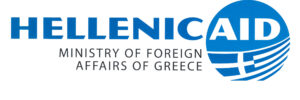Net ODA flows by DAC member countries were USD 149.3 billion in 2018, representing a fall of 2.7% in real terms compared to 2017. The fall reflects a reduction in in-donor refugee costs for many DAC members.
The number of refugees entering Europe has dropped since its peak in 2015 and 2016. DAC countries reported USD 10.6 billion in 2018 for in-donor refugee costs, a fall of 28.4% in real terms compared to 2017. These costs represented 7.1% of total net ODA compared to 9.6% in 2017 and 11.0% in 2016, when in-donor refugee costs were at their highest. For seven countries, these costs represented more than 10% of their total ODA and for two of them it was over 20%.
Net ODA flows for bilateral projects, programmes and technical assistance, which represent just over half of total net ODA, rose slightly by 1.3% in real terms in 2018 compared to 2017. Contributions to multilateral organisations, which represent about a third of total ODA, were stable. Humanitarian aid was USD 15.3 billion, a fall of 8% in real terms.
The preliminary data show that net bilateral aid flows to Africa were USD 29.7 billion, representing a fall of 4.0% in real terms compared to 2017. Within this total, USD 25.9 billion were for sub-Saharan Africa, a fall of 4.4% in real terms.
By income group, net bilateral ODA flows to low-income countries were USD 24 billion and fell by 6% in real terms compared to 2017. Aid to lower-middle income and upper-middle income countries, which stood at USD 21 billion and USD 10 billion respectively, fell by 11% and 19% in real terms. Net ODA to high income countries was USD 158 million in 2018.
Preliminary data show that net bilateral ODA from DAC countries to the group of least developed countries, which had been on a falling trend before rebounding in 2017, fell by 2.7% in real terms to reach USD 27.6 billion.
Net ODA rose in seventeen countries, with the largest increases in Hungary (20.7%), Iceland (17.4%) and New Zealand (25.6%), by contrast it fell in twelve countries, with the largest falls recorded in Austria (-11.7), Finland(-14.6%) , Greece(-14.5%) , Italy (-21.3%), Japan (-13.4%) and Portugal(-15.6%). Most of these falls were due to lower in-donor refugee costs.
ODA, on the grant equivalent basis as per cent of GNI met or exceeded 0.7% for Sweden (1.04%), Luxembourg (0.98%), Norway (0.94%), Denmark (0.72%) and the United Kingdom (0.70%). Many providers of development cooperation beyond the DAC also report their data to the OECD. Türkiye and the United Arab Emirates both exceeded 0.7% ODA as a share of GNI, with 1.10% and 0.95% respectively.
Net ODA flows from DAC-EU countries were USD 87.4 billion, representing a fall of 1.2% in real terms compared to 2017. If in-donor refugee costs are excluded, their ODA flows increased by 3.9% in real terms.
More information:
https://www.oecd.org/development/development-aid-drops-in-2018-especially-to-neediest-countries.htm
